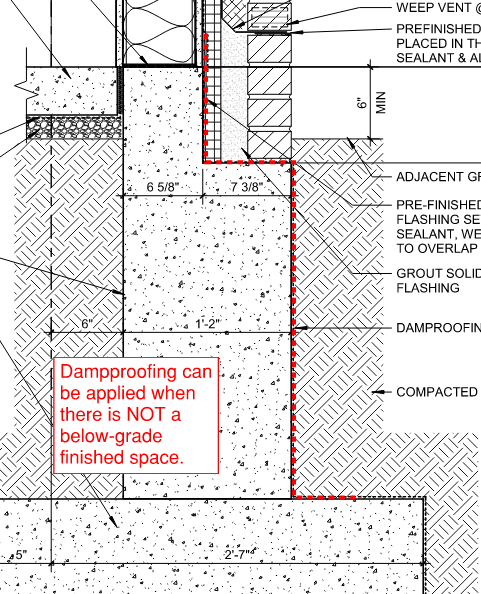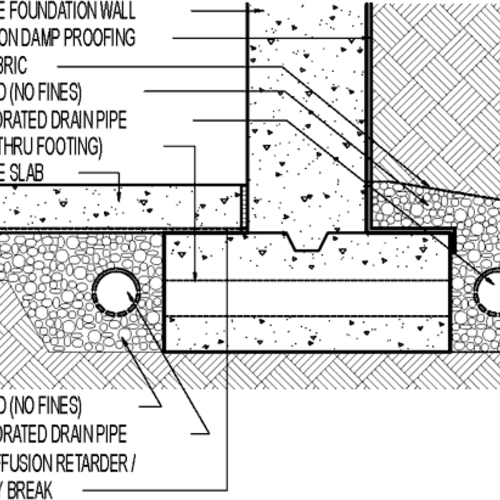7 Proven ways to manage humidity with mould treatment newcastle
7 Proven ways to manage humidity with mould treatment newcastle
Blog Article
Exploring the Various Techniques and Solutions for Effective Damp Proofing
Moisture in structures postures significant difficulties to both structural integrity and interior air high quality. Different methods and remedies have actually arised to fight this prevalent concern. From typical damp-proof membrane layers to ingenious chemical therapies, each approach provides distinct advantages. Recognizing these options is necessary for efficient wetness control. Choosing the best option depends on certain building problems and demands, motivating additional exploration into the most efficient moist proofing techniques available.
Understanding the Causes of Moisture
Wetness can arise from different resources, understanding these reasons is essential for effective removal. Generally, wetness stems from 3 primary resources: climbing wet, permeating wet, and condensation. Increasing damp takes place when groundwater travels up with porous products, such as block or stone, typically due to an absence of an effective barrier (mould removal newcastle). Penetrating damp is commonly brought on by exterior elements, consisting of roof leaks, damaged gutters, or harmed walls, enabling water to penetrate a building. Condensation, on the other hand, arises from excess dampness in the air, usually intensified by bad ventilation and temperature distinctions, causing water beads basing on surfaces. Recognizing these underlying problems is essential, as each kind of dampness requires a tailored method for remediation. Correct analysis helps in figuring out the most efficient solutions, eventually securing the architectural stability of a building and enhancing interior air high quality
Conventional Damp-Proof Membranes

Chemical Damp-Proofing Solutions
Chemical damp-proofing options use a cutting-edge strategy to preventing moisture breach in buildings. These methods usually include the application of liquid chemicals that penetrate masonry and form an obstacle versus increasing damp. Typically utilized chemicals include silanes, siloxanes, and various other water-repellent representatives that react with surface area materials to develop a hydrophobic layer.The application process generally calls for boring holes right into the walls, infusing the chemical remedy, and enabling it to treat. This method is especially beneficial for older frameworks where traditional damp-proof membrane layers might be impractical. Chemical damp-proofing can be less disruptive and extra economical than substantial restoration projects.While effective, these remedies depend on appropriate application and environmental problems for peak performance. damp specialist newcastle. Regular maintenance and tracking are important to guarantee the durability of the damp-proofing therapy. On the whole, chemical damp-proofing represents a flexible option for securing buildings against moisture-related damages
Cavity Wall Surface Construction Methods
Cavity wall building and construction techniques use many advantages, especially in moisture control and energy performance. By integrating an air void between 2 layers of stonework, these walls successfully mitigate water access while boosting insulation. This combination not only protects structures from dampness yet also adds to lowered power consumption.
Benefits of Tooth Cavity Walls
When taking into consideration reliable wet proofing methods, the advantages of cavity walls stick out plainly. Tooth cavity wall surfaces include 2 different layers, producing an air gap that efficiently minimizes dampness infiltration. This style decreases the threat of wetness, as the external wall surface works as an obstacle versus rainfall and water access. Furthermore, cavity walls boost thermal insulation, which adds to energy effectiveness by lowering warm loss. They likewise give audio insulation, helping to produce a quieter interior atmosphere. The air space allows for ventilation, which helps in wetness control and reduces the probability of mold and mildew growth. These benefits not only enhance the overall convenience of a structure however likewise add to its durability and structural honesty.
Wetness Control Techniques
Reliable dampness control approaches are critical in tooth cavity wall surface building to ensure lasting security versus moisture. One key method entails the incorporation of weep openings, which facilitate water drainage from the dental caries, avoiding buildup. Furthermore, the usage of breathable membranes can help handle moisture levels while permitting trapped vapor to get away. Correct placement of insulation is additionally vital, as it needs to not obstruct water drainage paths. Guaranteeing that the external fallen leaves of the tooth cavity wall are constructed with water-resistant materials boosts total resilience. Routine upkeep checks are necessary to identify any type of obstructions or damage early, securing the framework's integrity. Eventually, a mix of these methods develops a durable protection against moisture invasion in tooth cavity wall surfaces.
Insulation and Power Performance
Insulation plays an essential duty in boosting power performance within dental caries wall surface building. By including shielding products, these wall surfaces produce a thermal barrier that reduces warm loss and decreases energy consumption. Effective insulation not just aids keep a secure interior temperature however also mitigates the danger of wetness, as it avoids condensation within the wall tooth cavity. Various strategies, such as making use of inflexible foam boards or mineral woollen, can be used to achieve optimal insulation performance. Additionally, appropriate installation is important to ensure that gaps and voids are lessened, which can or else jeopardize power effectiveness. Inevitably, a well-insulated cavity wall surface adds considerably to overall sustainability and reduces cooling and heating costs for homeowners.
Exterior Damp Proofing Methods
Exterior damp proofing approaches are vital for protecting structures from dampness infiltration. 2 efficient strategies include the application of water-proof membranes and the setup of French drains. These remedies help minimize water accumulation and preserve the honesty of buildings.
Waterproof Membrane Layer Application
While different methods exist for protecting against wetness access, the application of water resistant membrane layers remains a very efficient external wet proofing technique. These membrane layers are typically made from products such as polyethylene, rubber, or changed asphalt, providing a durable obstacle against water infiltration. The installation process includes applying the membrane layer to the exterior surfaces of wall surfaces or structures, making sure total insurance coverage to protect against leakages. Proper bond and securing at joints are important to optimizing performance. Waterproof membrane layers can be used in numerous types, including liquid finishes and sheet membrane layers, allowing for versatility based on the particular requirements of the structure. This method not only protects structures from wetness yet also enhances their durability and structural integrity.
French Drain Installation
One effective method for managing groundwater and stopping wetness build-up around a structure's foundation is the setup of a French drain. This drainage system consists of a trench filled with crushed rock and a perforated pipeline that reroutes surface area water away from the foundation. Appropriate setup requires careful preparation, making sure that the drain inclines away from the structure to facilitate excellent water circulation. Furthermore, the area of the drainpipe is essential; it must be positioned in areas vulnerable to merging or excess wetness. Normal upkeep, including clearing up particles from the gravel and making certain the pipeline remains unobstructed, is important for long-term performance. Ultimately, a well-installed French drain can substantially lower the danger of water-related issues in basements and foundations.
Interior Waterproofing Strategies
Inside waterproofing methods are vital for securing a building's interior from wetness seepage and prospective water damage. These approaches normally include the application of customized materials and techniques created to create a dampness barrier within the structure. One typical method is the usage of waterproof finishes or sealants on walls and floorings, which prevent moisture from permeating surfaces.Additionally, mounting indoor drainage systems, such as sump pumps, can successfully take care of water accumulation in basements and creep rooms. Another technique includes making use of vapor obstacles, which are installed to inhibit wetness activity from the ground right into living spaces.Moreover, addressing any type of fractures or spaces in wall surfaces or foundations with suitable sealers assures a thorough protection versus water breach. By implementing these interior waterproofing approaches, property owners can considerably lower the threat of mold growth, structural get more info damage, and other moisture-related issues. Proper implementation of these strategies is crucial for long-term protection and structure honesty.
Routine Maintenance and Evaluation Practices
Routine maintenance and evaluation methods are important for ensuring the long-lasting efficiency of moist proofing services in any kind of building. Routine checks allow homeowner to identify very early signs of dampness breach, such as peeling off paint, mold and mildew development, and musty odors. These indicators can signify underlying concerns that call for instant attention.Inspections must be performed at the very least each year, concentrating on prone locations like basements, crawl rooms, and outside wall surfaces. During these analyses, homeowner need to take a look at sealants, water drainage systems, and air flow to confirm they operate correctly.Additionally, maintaining downspouts and gutters is necessary, as stopped up systems can cause water accumulation near the structure. Carrying out a regular upkeep routine, along with prompt fixings, can significantly extend the life-span of moist proofing measures and protect the structural stability of the building. Aggressive steps ultimately add to the total health and wellness of the living environment.
Regularly Asked Inquiries
How Much Time Does Damp Proofing Generally Last?
The period of wet proofing effectiveness varies, normally lasting in between 20 to half a century. Factors such as application high quality, ecological problems, and upkeep practices greatly influence the long life of the wet proofing treatment.

Can I Damp Proof My Home Myself?
The individual considered the feasibility of do it yourself damp proofing. With proper study and the ideal products, it is possible. However, they likewise recognized the value of professional advice to guarantee long-lasting performance and avoid future concerns.
What Are the Indicators of Inefficient Damp Proofing?
Indicators of ineffective moist proofing consist of persistent moldy smells, noticeable mold growth, peeling off paint, damp spots on wall surfaces, and wood degeneration - mould removal newcastle. Property owners must address these problems quickly to stop more damage and wellness issues
Does Damp Proofing Affect Indoor Air Top Quality?

How Much Does Expert Damp Proofing Price?
Professional moist proofing prices vary significantly, typically varying from $1,000 to $5,000 relying on the home's dimension, the level of the damp problem, and picked techniques. Each situation calls for a tailored assessment for exact prices. Commonly, wetness stems from 3 key sources: rising moist, permeating wet, and condensation. When taking into consideration effective damp proofing methods, the advantages of tooth cavity wall surfaces stand out plainly. Outside wet proofing approaches are vital for protecting frameworks from moisture infiltration. While numerous techniques exist for preventing wetness access, the application of waterproof membrane layers remains an extremely reliable external wet proofing strategy. Indications of inadequate damp proofing include consistent moldy smells, visible mold development, peeling paint, damp spots on walls, and timber degeneration.
Report this page